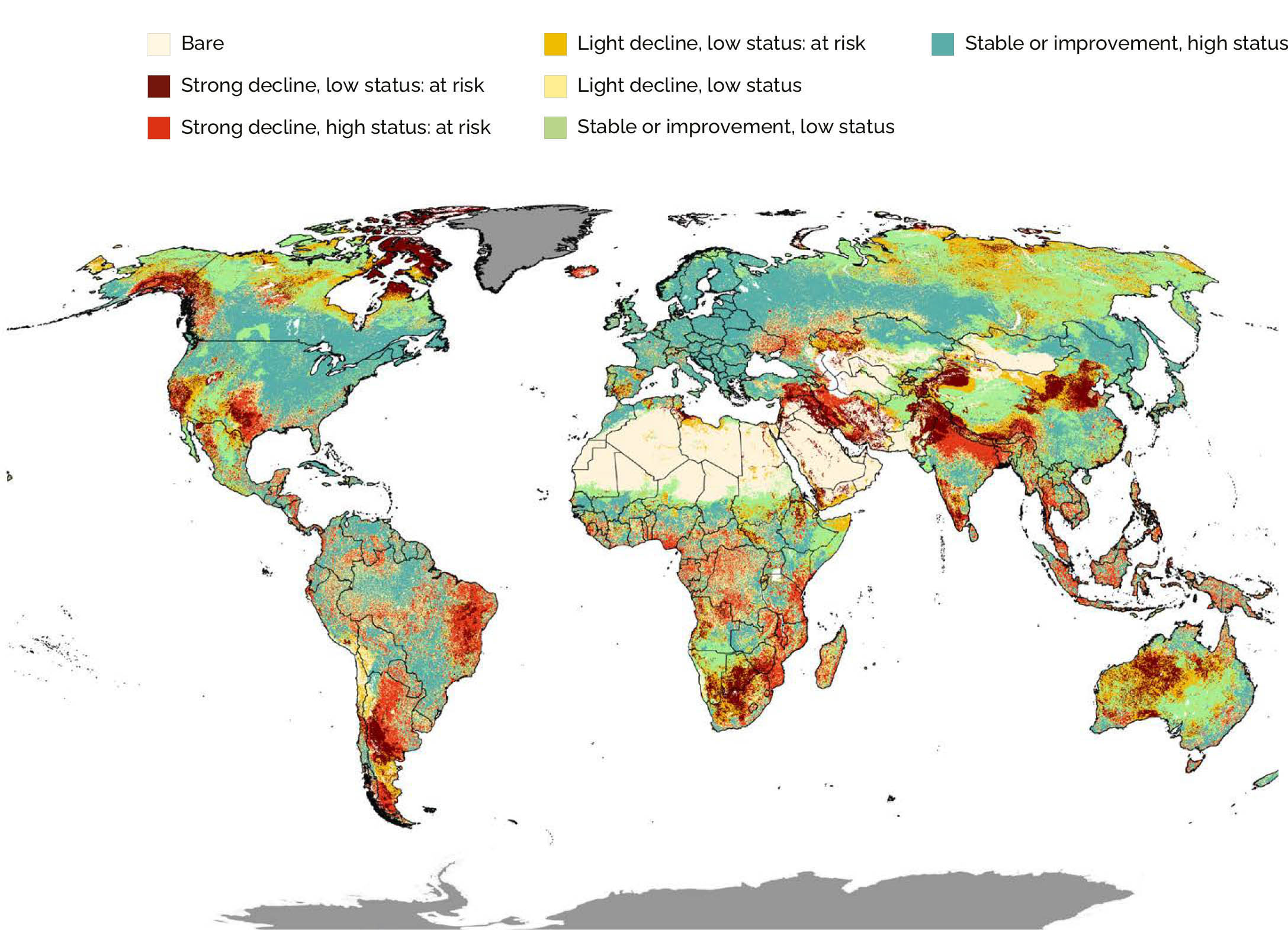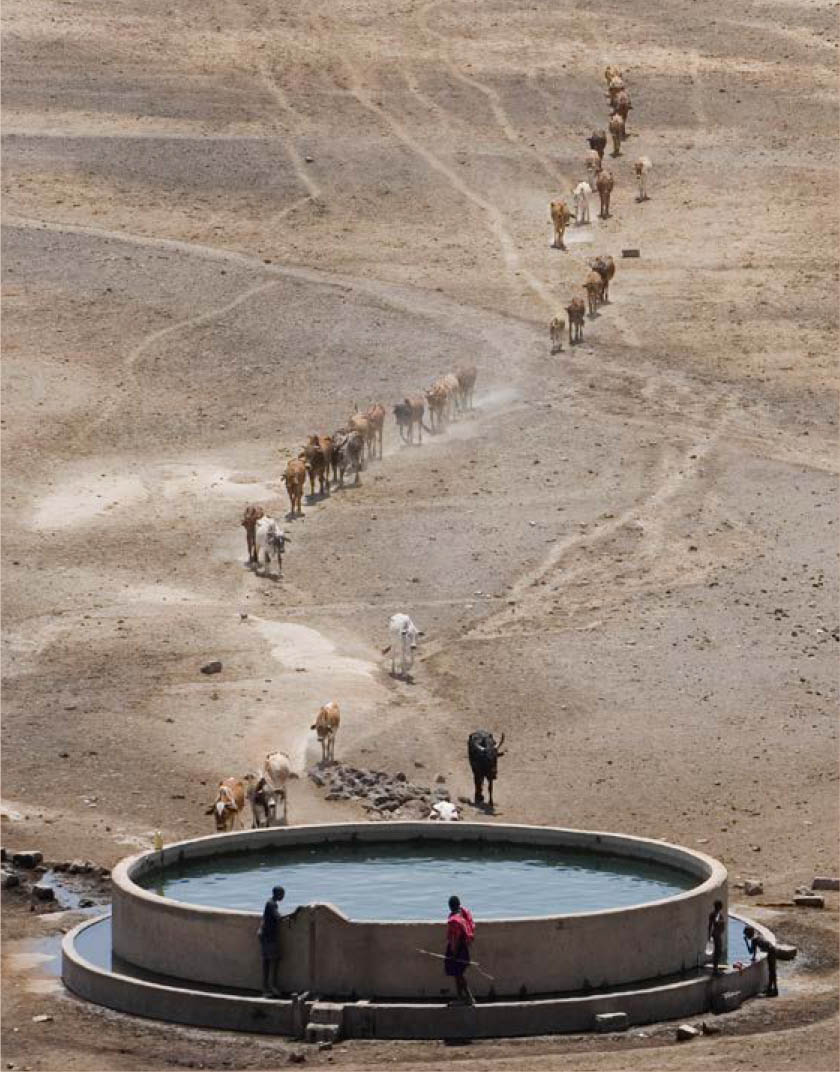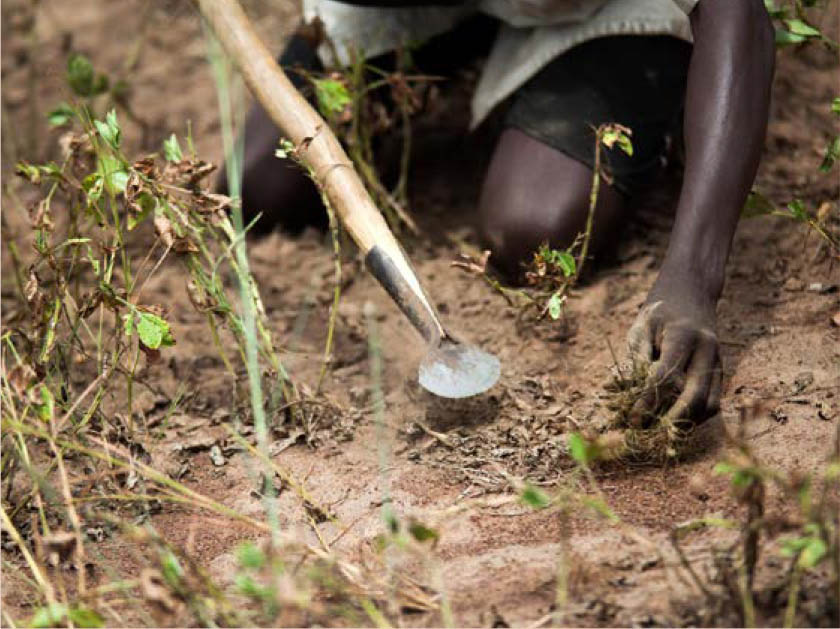3 Challenges Run Deep
3.1 Land and water systems are at breaking point
Pressures on land and water systems are compromising agricultural productivity. This is occurring precisely at times and in places where growth is most needed to meet sustainable global food targets. Human-induced land degradation and water scarcity raise risk levels for agricultural production and ecosystem services (Map S.12). Climate change adds uncertainty to the agroclimatic risks facing producers, particularly those who are least able to buffer shocks and who are food insecure. Climate volatility and extreme hydrological and meteorological events will affect all producers, but risks are greater in areas with minimal resource endowments, growing populations and limited economic powers to adapt local food systems or find substitutes.

Source: Coppus, forthcoming, modified to comply with UN, 2021.

The scale and intensity of current land and water use for agriculture are not sustainable at many local levels. In some cases, this extends to the global level when just-in-time supply can break down, particularly if unforeseen drought drastically reduces crop production.
Projections under climate change illustrate how temperature changes can exacerbate production risks. Competition for land and access to water is evident, particularly as it affects impoverished communities, whose food security and livelihoods depend directly upon land and water. Forced migration resulting from conflict pushes demand into fragile economies where resources are limited and rapidly exhausted.
The risk to human-induced land degradation primarily affects cropland. Almost a third of rainfed cropland and nearly a half of irrigated land are subject to risk from human-induced land degradation (Table S.5).

Source: Coppus, forthcoming.
Croplands at risk tend to be areas recently brought into production. They are subject to limited freshwater availability and increasing population density. The historical drought frequency on rainfed cropland reflects this concentration of drought risk on land associated with high population densities (Map S.13).


Most grasslands at risk are exposed to decreasing freshwater availability. There are exceptions in Southern America and sub-Saharan Africa, where decreasing land productivity and soil protection account for declining ecosystem services. In Asia, increasing water stress contributes to grasslands at risk. In sub-Saharan Africa, grasslands are prone to frequent and intense fire.
Forest land is prone to deforestation, and in sub-Saharan Africa also to frequent and severe fire. The biophysical status of most regions at risk is characterized by low soil organic matter and low plant species biodiversity, which are influenced by water cycles. Soil salinity is estimated to take 0.3–1.5 million ha of farmland out of production each year and reduce productivity on a further 20–46 million ha. According to the United States Department of Agriculture, approximately 10 million ha of arable land annually drops out of agricultural use due to salinization, sodification and desertification.

